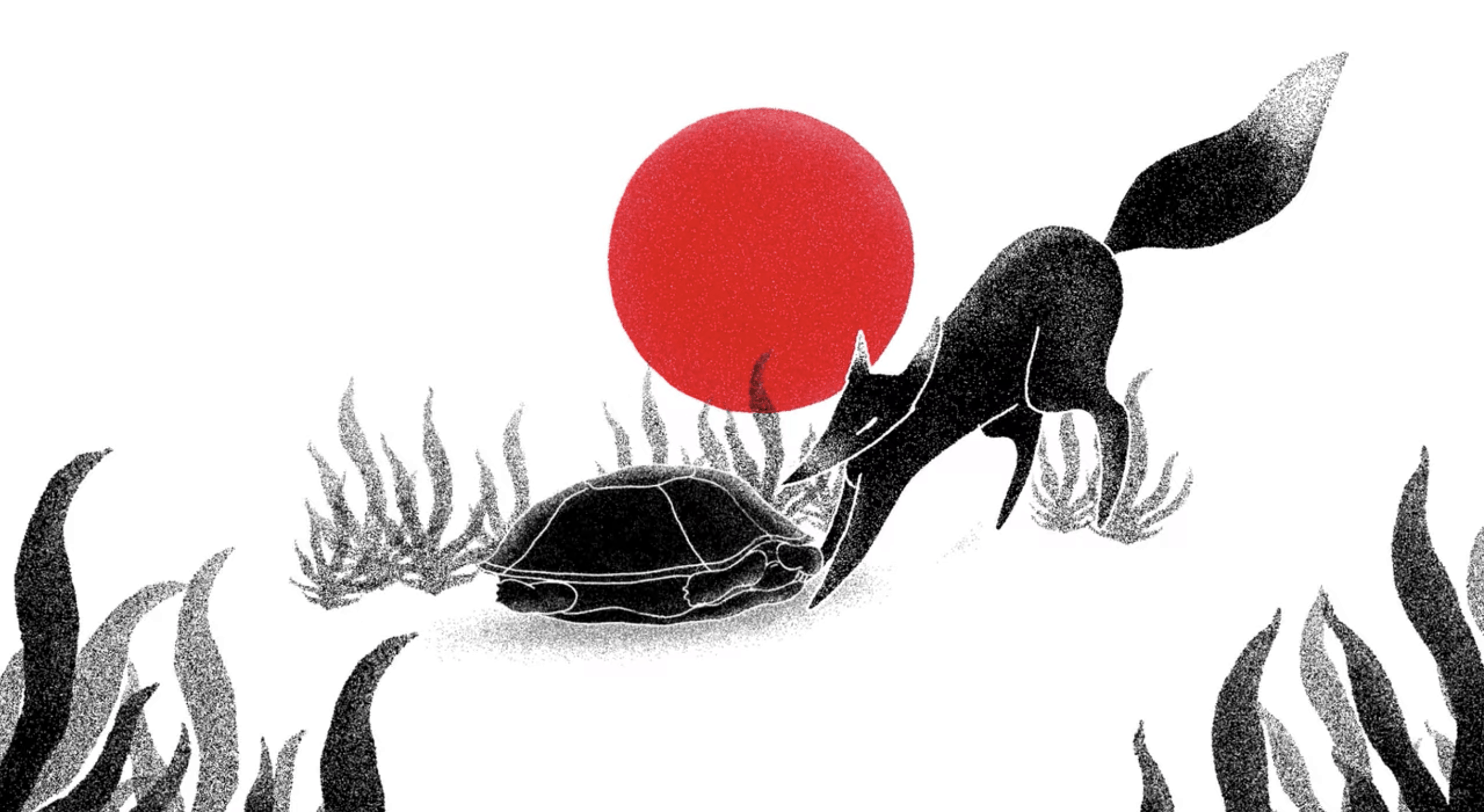Keeping it simple to watch while intriguing the audiences to find out more about the experience of living with mental conditions can be a tough challenge. But animation can be your savior. If you’d like to see how animated mental health videos can flesh out the social aspects of mental illnesses, here are some of the best examples you’d find helpful.
- 1. Mental Health Video Ideas from WHO – “I had a black dog, his name is Depression”
- 2. “In Between”
- 3. Mental Health Awareness Video Ideas – “Overcoming Bad Inner Voices”
- 4. “Sexual Harassment and Bullying” – Mental Health Video Ideas
- 5. “Anxiety is the Greatest” – Mental Health Awareness Video
- 6. Mental Health Awareness Video Ideas – “The Last Knit”
- 7. Mental Health Video Ideas – “Mindfulness”
- 8. “Panic Attack: Know the Signs”
1. Mental Health Video Ideas from WHO – “I had a black dog, his name is Depression”
This incredibly popular mental health educational video from the WHO captures the feeling of having depression effectively with the image of a black dog. This black dog follows people everywhere like a shadow that sometimes may become very small, but never really leaves.
With the image of the black dog visible, depression becomes so much more tangible. A lot of people diagnosed with this condition attest to how accurate this presentation is. And even though the animation is made of still images, the expressions and postures of the characters still successfully invoke emotions and sympathy from children.
2. “In Between”
Now this is technically a short film — but that’s okay because you can also view it as an animation visual aid that has successfully used the narrative power to add emotions and joy to an otherwise dry, textual subject.
The special thing about this story is that it puts a lighter spin on a topic that too often emphasizes the hardships of mental conditions. It highlights how powerful animation can be in conveying difficult emotions, much like how medical procedure animation helps simplify and visualize complex health topics.
In “In Between,” the anxious crocodile stops the main character from achieving happiness, but the light tone and love-hate relationship between the crocodile and our character remind us that these feelings don’t have to dominate our lives. Just like learning about a medical procedure can empower patients, we can learn to face and conquer anxiety, even if it never fully leaves.
The message is not only beautifully portrayed in this hand-drawn animation, but it’s also made unforgettable by the adorable French-influenced style that was used. It’s surely a stimulating addition to a class on raising awareness of anxiety for adult learners.
3. Mental Health Awareness Video Ideas – “Overcoming Bad Inner Voices”
The School of Life is another educational YouTube channel that makes full use of animation as a tool to present information. The special thing about this channel is the interesting art style. To say that it’s beautiful isn’t quite right — it just imitates a very contemporary art style that uses a lot of block images and primary colors. “Overcoming Bad Inner Voices,” for instance, is truly a work of art. This uniqueness is what makes the video so memorable.
And if this doesn’t help the information covered seem standout, then the ingenious use of background music should definitely do. The music in this video fluctuates with the mood and story told, engaging your sense of sound as well as the visual and verbal senses. It really pulls you into the world of the video and soon enough, you’d be surprised the lesson is all over.
4. “Sexual Harassment and Bullying” – Mental Health Video Ideas
Looking for an appetizer that will get people interested in looking at a rather tedious topic? This little clip should do the trick — it’s an introduction to mental well-being regulations within the University of New South Wales. As with any other university, every student is welcomed onto campus by going through a compulsory “course” about appropriate behaviors (e.g. acting with consent, avoiding bullying, avoiding being a bystander). A lot of it involves reading about what consent means and answering scenario questions, which sounds rather tedious.
Which is where videos like this come in. Not only does it show the exact environment that the students are in, it also provides some other material to engage the students without making them feel like they’re being lectured at.
The video has a range of students from diverse backgrounds — which represents the diverse student audience — and it quickly summarizes all the information covered, helping students remember the most important bits about the training. After a video like this, they will probably feel more at ease and eager to learn more than to feel pressured into doing basic mental health training.
If you’re interested in this video and want to create your own, then check how much does 2d animation cost per minute.
5. “Anxiety is the Greatest” – Mental Health Awareness Video
This video is rather special — it’s not from an educator but from a YouTuber who’s experienced anxiety before. She’s showing people (which is rather like educating them) about what it’s like to be living every day with these thoughts in your head.
Her style is rather cartoonish — her images are all hand-drawn, and they show a lot of her personality as if she’s a friend of yours. The facial expressions that she draws are dramatic, although it’s so personal you feel like you can imagine her face expressing them. In most cases, it’s quite simple — there’s very little color — but it allows the script to shine through. And her script, even though it’s describing a very serious problem, is appropriately hilarious. Her video is entertaining and eye-opening.
6. Mental Health Awareness Video Ideas – “The Last Knit”
While technically a short movie, this strange story has a lot more meaning under the surface. It’s a story about a woman who does nothing other than knit. She doesn’t seem to be able to stop knitting at all, even when it leads to her downfall.
What has this got to do with mental health education? Well, this obsessive knitting is a metaphor for addiction. And this shows clearly not just in the story but also in the slightly crazy appearance of the woman as if she is hyperactive but cannot think of anything else. This interesting visualization of a very serious problem is nuanced and deep, and it asks the audience to empathize with the character as well as addicts, rather than label and discriminate against them.
And that’s the magic of animation — you don’t need to be actively teaching for you to educate others.
7. Mental Health Video Ideas – “Mindfulness”
This example comes from Netflix’s mini-docuseries called The Mind, Explained. Instead of looking at a mental health issue, the video examines a common solution proposed for these issues: being mindful. This often goes hand in hand with breathing techniques and meditation.

The healthcare animation is used in this video as an aid. It is largely featured in the telling of the “Mr Fox and Mr Turtle” story that many Buddhist monks have been taught. In this tale, Mr Fox is a representative of all the troubles that one may face — it is hungry and looking to attack and devour prey, such as Mr Turtle.
Mr Turtle at this point pulls into his shell in the hopes that Mr Fox will grow tired of a hunk of rock, which is how he escapes Mr Fox’s hunt. The moral is that when you’re faced with problems threatening to unravel your life, you can choose to take a step back into yourself and come to terms with your thoughts and feelings. It’s the best way to brave the storm rather than running away from your problems.
What’s special is that this animated Mr Fox exists not only in the hand-drawn scenes, but he appears in live footage too, specifically when the interviewees talk about external problems that we face. In other words, the symbolism of the animation transcends the animation itself, leaving a strong association with the viewers.
If you’re interested in how animation can simplify complex topics, like explaining the function of medical devices, check out our article: Medical Device Animation: A Detailed Guide with 4 Examples
8. “Panic Attack: Know the Signs”
This 3-minute mental health education video is simply made with vector animation, but it’s still very helpful. By telling a heartfelt, real-life story through the movements of the character, viewers can learn about the often badly-understood condition of having a panic attack.
From symptoms in the body to the occurrences of the brain, panic attacks can seriously damage a person’s psyche as well as their physical health. The video emphasizes this through clear images and a strong voiceover.
The music made the video a little less boring or tiring to watch, so the audience sticks around. In any case, the video effectively summarizes information that would have taken too long to be processed without the help of visualization. This means that the video is short enough to fit our attention span. That makes it a great video for teaching.
Still too abstract? It's back to basic time with this e-book
The essential guide to medical animation
This eBook will guide you through the disciplines and principles of applying animation in the medical setting
Conclusion
Mental health is not an individual’s problem. Raising public awareness, and educating society through animated videos are some of the initiatives in dealing with this “21st-century illness”. From summarizing information to telling moving anecdotes, these mental health videos can surely capture viewers’ attention, leave an impression, and evoke sympathy from them.
Read further:
- 8 best examples of mental health educational video for scientific explanations
- Shinshin Tang case study: Animation empowers mental health education for adolescence
- The application of animation in medical education
- ICareBetter case: whiteboard animation for patient education

Sean Bui, the founder and creative director of F.Learning Studio, is a respected leader in the e-learning and multimedia production industry. With over 10 years of experience, he has dedicated his career to helping organizations create engaging and impactful learning experiences.
Under his leadership, F.Learning Studio has grown into a trusted partner for organizations in the education, healthcare, and corporate training sectors, producing over 2,000 minutes of educational animation.




